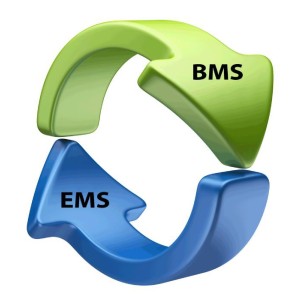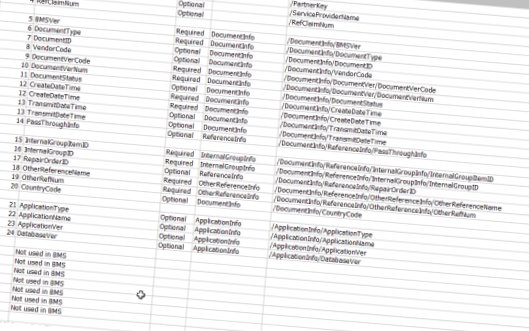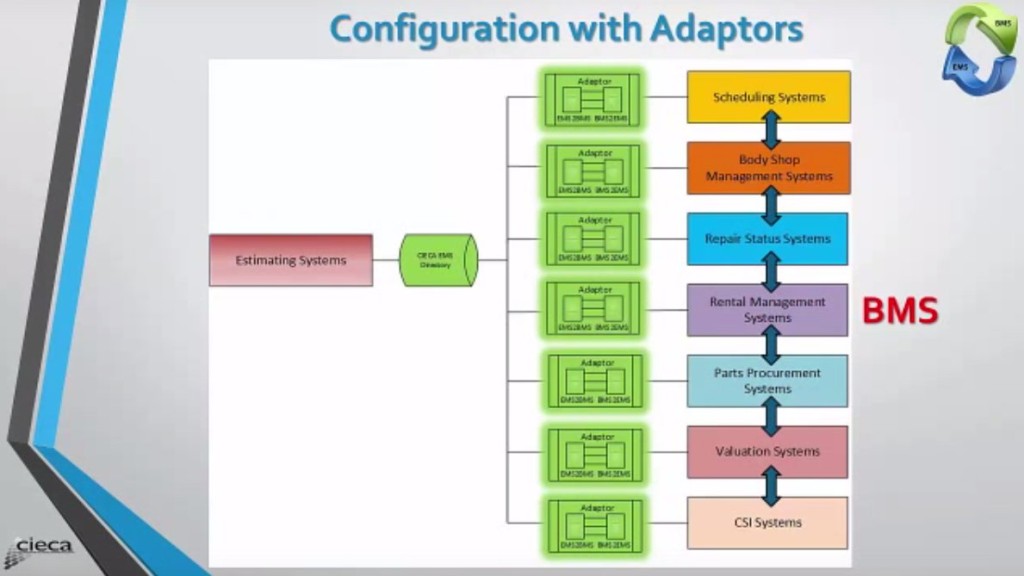
CIECA offers partial BMS-EMS mapping, urges collision repairers to demand or implement it
By onAnnouncements | Associations | Business Practices | Education | Technology
The IT departments of midsize and larger collision repair operations can use a new mapping setup to convert ancient, unsecured EMS messages into modern, privacy-protecting BMS outputs, CIECA said this week.
“CIECA took the expense,” Executive Director Fred Iantorno said. “… We’ll show you how to do it.”
And smaller operations without that option should use the mapping as leverage to demand Business Management Standard outputs from Mitchell, AudaExplore or CCC, Iantorno said.
“What he needs to know is that it’s available,” Iantorno said of the owner of a 1-2 shop network.
After all, Iantorno observed during a webinar Tuesday and interview Wednesday, large multishop operations already have received that support from the information providers. Insurers have it. PartsTrader has it.
“MSOs have it. … Why can’t the little guy get it?” he said.
Otherwise, all of these shops and others in the collision repair food chain will continue to use the 1994 Estimate Management Standard — unsupported since 2003, complicated where you don’t want it and limited where you do, and easily obtainable by a party looking to capitalize on the trove of Big Data inside, according to Iantorno. (For more on the difference, see this earlier RDN coverage.)
The EMS system was fine for its time — built to deliver dBase (remember that?) files in a largely pre-Internet world. But it’s time to move on, and the partial mapping described in a webinar Tuesday (see slides) should help you do that, CIECA said.
GmbH control expert Mike Hastings on the webinar said 17 BMS messages are included in the mapping (See them and other webinar slides here.) available.
EMS has 8-10 messages, while BMS has 194 messages. However in terms of files, BMS is more streamlined; there are 17 files in an EMS and no send-respond mechanism to verify all were transmitted properly, according to Iantorno.
“You can easily track which ones are missing,” he said.
Think of those annoying “Did you get my email?” conversations at your workplace, and you can see the benefit as well as the security value of the BMS “chain of custody” message trail.
One MSO representative at a recent CIECA conference observed that their business used to deal with 3.1 million EMS files a month, but that number dropped to 200,000 following the BMS conversion, according to Iantorno.
CIECA doesn’t expect the industry to switch overnight to BMS. However, the mapping assistance they’ve created could help spur a reasonably smooth and quick transition where EMS and BMS were exported in parallel until the industry finally buried EMS for good.
“I would see them running in parallel for at least five years,” Hastings said.
More information:
Collision Industry Electronic Commerce Association, Sept. 29, 2015
Recommended CIECA EMS-BMS conversion resources:
Images:
An Excel spreadsheet shows EMS to BMS mapping for collision repairers and other users during a demonstration. (Screenshot from CIECA webinar)
A sample diagram of the EMS to BMS conversion using adaptors is shown. (Screenshot from CIECA webinar)
The Collision Industry Electronic Commerce Association’s unofficial EMS to BMS logo. (Provided by CIECA)


